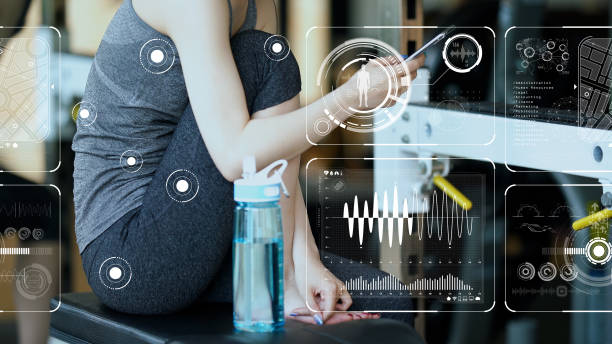With only a few months left before we bid goodbye to 2021, we thought it’s a good time to look back on all the wellness trends that have gained traction in the USA. Notably, it has been a tough time for many states because of the rising number of COVID-19 cases.
On a positive note, this year has emphasized mental fitness, virtual fitness, the global sleep economy, and personalized wellness and nutrition. This year has also bolstered the popularity of online shopping, even for food supplements and healthcare products. Let’s take a trip down memory lane in our roundup below.
1. Global sleep economy
Did you know that the sleep industry is a multi-billion business? The global mattress market alone was valued at around $432 billion in 2019. Other sectors within this business, like those involved in developing or manufacturing sleeping aids or treatment, also continued to skyrocket in value within the last few years.
Experts attribute the upward trend in the sleep economy to the growing anxiety levels during the pandemic. As more people feel stressed out about the uncertainties that the COVID-19 situation brings, the more they tap into sleeping solutions to help them cope.
2. Personalized wellness and nutrition
Personalized wellness is, without a doubt, one of the most exciting developments in this niche. The rapid advancements in wearable technologies from brands like FitBit and the Apple Watch highlighted the importance of tracking fitness and wellness indices. Many people invest in smartwatches, fitness trackers, wearable blood monitors, biosensors, and other wearable devices.
Besides the rise of wearable tech, there’s also a growing interest in in-home testing. This allows patients to look into potential health concerns and consider healthcare options as soon as possible.
3. Mental fitness
The pandemic and restrictions have taken a toll on the mental health of many people across the country. As a result, mental health has taken center stage in several conversations in the wellness niche. For example, businesses have started to prioritize the mental wellbeing of their employees by initiating projects like flexible time away from work, walking meetings, and in-house mediation and yoga.
There are also massive improvements in accessing mental wellness services thanks to teleconsultation options. Accelerated digital transformation has also empowered people to seek self-care options for their mental and emotional problems.
4. Easier access for wellness products
Online shopping or eCommerce has become the most preferred option of consumers today. That’s because it provides the convenience of buying essential and non-essential items without having to leave one’s residence. It also allows shoppers to explore brands that their local stores do not offer.
Before the pandemic hit, customers mostly shopped for home improvement items, clothing, accessories, and other items. Nowadays, there is also increased activity in eCommerce websites and online marketplaces. This is mainly because a lot of people prefer sourcing wellness products like food supplements, relaxation devices, and more. One of the more popular items in 2021 was when customers began to learn they could buy Kratom online from vendors like The Kratom Family. With lockdowns in place, wellness seekers could still go online and focus on their health by ordering supplements like these without ever having to leave their home.
In a huge way, the rise of eCommerce in the US has also paved the way for easier access to heavily regulated food supplements.
5. Virtual fitness studios
Before COVID-19 hit, virtual fitness classes had already started gaining traction. So, it’s not surprising how far this industry has reached in the last couple of months. If you do a quick Google search, you will most likely come across thousands of options for virtual fitness, such as on-demand workout videos you can access through your mobile phone to subscription-based personal training programs.
6. Intuitive eating
Thanks to the longer time spent in homes, many people have become mindful about the food they eat. However, instead of sticking to restrictive diets, most have shifted into a new framework of thinking – intuitive eating.
Unlike restrictive diets, intuitive eating encourages people to listen to their bodies. It also promotes home cooking as it helps customize meals according to one’s nutritional needs and taste preferences.
Best of all, intuitive eating encourages people to prioritize local shops and producers as primary food sources. Not only do local producers provide fresh produce, but they also help the local economy grow.
Indeed, a lot of positive and exciting things have happened in the wellness industry this 2021. What other trends have you noticed so far? What are the trends you love and hate? Surely enough, you can expect more to come as technology opens up more opportunities for innovative and intelligent wellness solutions. It will be exciting to see how things will unfold for our country in 2022. Will it be different? Will it stay the same? The fact remains that people who are searching for wellness in their lives can find it’s not too far away.















